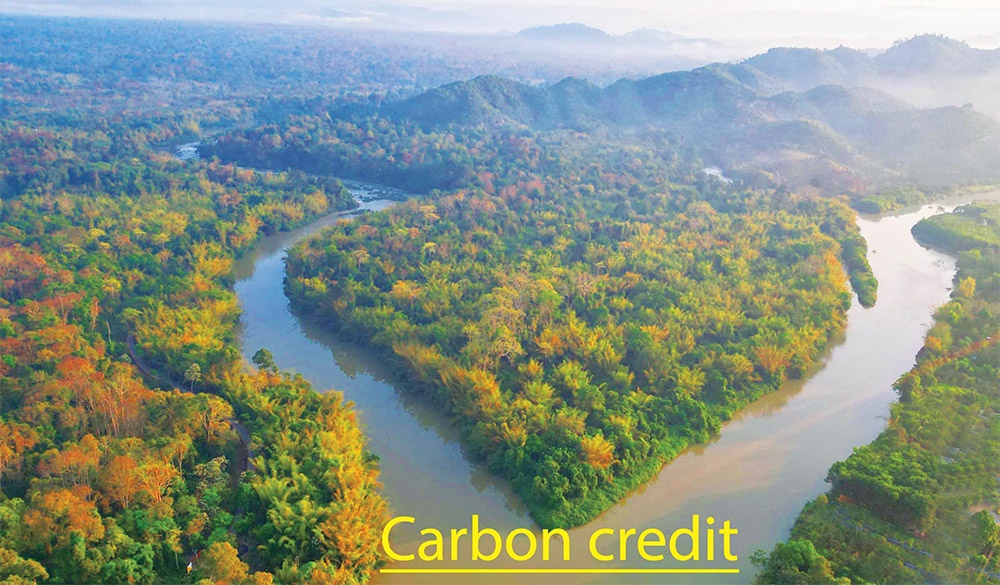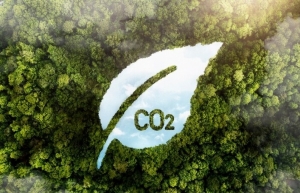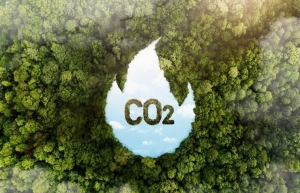Key components can provide basis for carbon credit market
The need for companies in Vietnam to start reporting their carbon inventory and participate in carbon credit exchanges has reached a critical juncture. Directive No.13/CT-TTg, which highlights the importance of handling credits to meet the Nationally Determined Contributions – commitments made by Vietnam to the UN to reduce emissions – is paired with the ongoing amendment of Decree No.06/2022/ND-CP to strengthen regulations to reduce emissions and protect the environment.
 |
| Lam Nguyen Hoang Thao, senior associate at Russin & Vecchi |
Greenhouse gas (GHGs) emissions include CO2, methane, nitrous oxide, hydrofluorocarbons, perfluorocarbons, and sulphur hexafluoride. A GHG inventory is an assessment of the GHGs emitted by an organisation over a specific period. It involves identifying sources of emissions, calculating the emissions and reporting these findings.
Companies emitting 3,000 tonnes of CO2 equivalent annually are now required to conduct GHG inventories. This mandate applies to key sectors such as thermal power plants, industrial facilities, freight transport companies, commercial buildings, solid waste treatment facilities, and large-scale livestock operations.
Over 1,900 facilities are subject to GHG inventory requirements, including those in industry and trade, transport, construction, and natural resources and environment sectors. These companies will face increasing pressure from Vietnam’s government, as well as investors, suppliers, and the public to manage their GHG emissions. Non-compliance risks legal penalties, reputational damage, and restricted access to financial resources. Being compliant requires assessing, quantifying, and reporting GHG emissions in alignment with international and domestic standards.
Decree 06, starting from 2023, mandated entities to submit operational data and related information for the GHG inventory by March 31 of the reporting year, covering the preceding year. Every two years from 2024 onwards, these entities must conduct entity-level GHG inventory and prepare a report. This report should be submitted to the provincial People’s Committee for appraisal by March 31, starting from 2025, and the finalised report is to be submitted to the Ministry of Natural Resources and Environment (MoNRE) by December.
From 2026 to the end of 2030, the MoNRE will allocate GHG emission quotas and reserved-auctioned quota ratio. Companies that have not been allocated quotas shall develop plans to mitigate GHG emissions at the facility level in accordance with the sectoral emissions mitigation plan.
Companies allocated GHG emission quotas must implement measures to reduce emissions in accordance with their allocated quotas. One effective strategy includes participating in the carbon credit exchange market to offset emissions and meet regulatory requirements.
Carbon credit exchange
Looking ahead, Vietnam plans to establish a pilot carbon credit exchange market in 2025, with full operation expected by 2028.
A carbon credit exchange market comprises various components. Firstly, it includes products such as carbon funds, bonds, pledges, forwards/future contracts, and repurchases. Secondly, it involves trading services like carbon brokerage, asset management, and carbon information consulting. Lastly, the market participants encompass certification organisations, compliance entities, intermediaries, institutional and private investors, as well as organisations and individuals.
The framework includes several key components. Certification organisations such as Verra’s Verified Carbon Standards, Global Carbon Council Gold Standards, and the Global Certification Scheme play a crucial role. Related certification mechanisms include the Clean Development Mechanism under the Kyoto Protocol and the Joint Crediting Mechanism.
Additionally, Carbon Credit Principles introduced in 2023 provide guidelines for carbon-crediting programmes such as Verra’s Verified Carbon Standard. These principles cover project strategies, credit origins and quantification, environmental and social impacts, the veracity of mitigation activities, and best practices for effective governance, credit tracking, transparency, and robust third-party validation and verification.
Regional examples highlight the growing importance of carbon credit initiatives. In Asia, Singapore’s AirCarbon Exchange has become a significant hub for credit trading, offering a marketplace for related assets and attracting regional and international participants. Similarly, in Australia, the Emissions Reduction Fund supports projects that reduce or avoid GHG emissions, demonstrating the potential for national frameworks to complement international standards.
Potential projects that can generate carbon credits for trading include those in the following areas: forestry and land use, renewable energy, energy efficiency and fuel switching, agriculture, waste disposal, transport, household devices, and chemical processes/industrial manufacturing.
The Carbon Exchange will oversee the auctioning, borrowing, and transferring of emission allowances, ensuring regulatory compliance and flexibility for companies. It will also validate and certify credits, maintaining market integrity and credibility through stringent standards and verification processes. From 2024, companies must initiate GHG inventories and begin planning emission reduction strategies tailored to their operational realities. By 2026, strict adherence to allocated emission quotas will be mandatory, alongside active participation in carbon credit trading on the exchange platform.
 |
The validation process
Project certification in carbon markets involves two primary forms, the mandatory and voluntary markets, and the process unfolds through five essential stages. Firstly, the project planning stage begins with estimating the climate impact and assessing it against the standards set by a carbon credit certification organisation. Secondly, once the project is planned, the approval stage undergoes review by the certification organisation. This stage involves presenting the estimated climate impact and assessments made during the planning phase.
Thirdly, following approval, at the third-party validation stage, the certification organisation conducts an independent assessment. This typically includes a thorough site visit to verify the project’s claims and data. Fourthly, upon successful validation, at the final review and approval stage, it receives certification and is issued with certified carbon credits. These credits can then be traded via a registry or used by the organisation to offset its own emissions.
Finally, post-certification, at the project monitoring stage, companies must implement the monitoring plan submitted during the planning stage. They regularly submit monitoring reports to the certification organisation. Additionally, periodic validations and verifications occur every five years to ensure ongoing compliance and the accuracy of the carbon credits. This structured approach ensures transparency, accountability, and credibility within the market. It supports global efforts to combat climate change by promoting verified emissions reductions and sustainable project practices.
Before entering the market, sellers must assess their strategies for generating carbon credits, ensuring they have robust plans in place. This includes evaluating their capability to forecast sales reliably and assessing whether their core product offerings are strong enough independently of credits.
Furthermore, supporting portfolio companies in developing comprehensive strategies is important. This involves identifying opportunities to expand market participation through carbon credit trading and suggesting enhancements to elevate the quality of renewable energy projects.
Additionally, market regulations, such as ensuring compliance with standards like Verra, must be diligently followed. Companies must mitigate the risk of greenwashing, where claims of environmental responsibility through carbon offsets may not align with actual contributions.
For buyers, due diligence in purchasing offsets is critical to verify the legitimacy and impact of projects associated with the credits. Robust oversight and adherence to transactional integrity are essential to prevent fraudulent activities, including issues like double counting and misrepresentation of carbon credits.
The roadmap set by Vietnam’s regulatory directives necessitates immediate action from enterprises to integrate carbon inventory practices and engage proactively in the credit exchange market. Engaging in the market provides companies with opportunities to trade verified emissions reductions. This generates additional revenue and improves their reputation as environmentally responsible entities. Accessing both local and international markets opens doors to new partnerships.
However, alongside these opportunities, companies must carefully assess the financial risks associated with carbon credit projects. Initial investments in emission reduction activities, such as renewable energy initiatives, require substantial capital and involve uncertainties in returns. Companies should conduct thorough financial analysis to ensure these investments align with their overall business strategies and risk tolerance.
Moreover, understanding legal issues in the market is critical. Potential risks include regulatory compliance, the risk of greenwashing accusations, due diligence in offset purchases, and fraud prevention. Following stringent standards and transparency in reporting and verification processes is essential for companies to maintain credibility and mitigate legal issues.
 | Vietnam capable of earning 200 million USD per year from carbon credit trade Vietnam is capable of selling some 40 million carbon credits for a revenue of 200 million USD annually, the Department of Forestry has calculated. |
 | WB's 51.5-million-USD payment helping Vietnam reduce emissions Vietnam has received a 51.5-million-USD payment for verified emissions reductions (carbon credits) for reducing deforestation and forest degradation (commonly known as REDD+) and for enhancing carbon stored in forests through reforestation and afforestation. |
 | Vietnam to strengthen carbon credit management Prime Minister Pham Minh Chinh has urged ministries to work with relevant agencies to reach deals with international partners to develop a carbon credit market, reduce greenhouse gas (GHG) emissions, allocate emission quotas, and create green financial resources for Vietnam. |
 | Suggestions pour in for carbon credit development There is an urgent need for rules to develop Vietnam’s carbon credit market, given the country’s significant potential to generate carbon credits from its vast forests and numerous greenhouse gas reduction projects. |
What the stars mean:
★ Poor ★ ★ Promising ★★★ Good ★★★★ Very good ★★★★★ Exceptional
Related Contents
Latest News
More News
- Heavy industries set for pilot greenhouse gas quotas (December 25, 2025 | 10:00)
- Swedfund invests in MSME growth and climate action in Vietnam (December 19, 2025 | 11:42)
- GreenYellow brings solar energy to light up remote schools in Tuyen Quang province (December 19, 2025 | 08:00)
- Charge+, Grab partner to develop EV charging network in Vietnam (December 18, 2025 | 17:11)
- Linking sci-tech and innovation to Vietnam’s net-zero future (December 18, 2025 | 14:31)
- Driving double-digit growth through green and circular transformation in Vietnam (December 17, 2025 | 09:00)
- Standard Chartered and ACCA deepen collaboration to develop Vietnam’s talent for a sustainable future (December 15, 2025 | 18:18)
- Schaeffler reports strong early output from Dong Nai solar project (December 12, 2025 | 15:16)
- Forestry conference highlights biodiversity and sustainability goals (December 09, 2025 | 13:35)
- Home Credit honoured among top 10 sustainable companies in trade and services (December 09, 2025 | 12:18)

 Tag:
Tag:




















 Mobile Version
Mobile Version